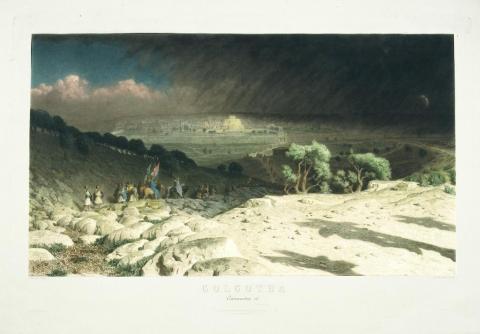"Golgotha, Consummatum est!" by Jean-Léon Gérôme (1824-1904)
Jean-Léon Gérôme was a neo-Greek and orientalist painter and one of the major figures of the French artistic scene in the second half of the 19th century. He was the son-in-law of Adolphe Goupil, and benefited hugely from Goupil's efficient system for the distribution of images. Goupil opened an art gallery in 1846: he purchased paintings from artists, reproduced them in his workshops and sold the original works and their reproductions. As he owned branches in New York, London, Berlin, La Haye and Brussels, the dissemination of images took on an international character enabling artists to become known to a wider public. Thanks to Goupil, Gérôme's paintings were sold above all in the United States.
When Gérôme presented his canvas Golgotha, Consummatum est! to the 1868 Salon, he received severe criticism. The artist turns away from traditional iconography, representing only the shadows of the three crosses. This audacious composition, similar to a modern photographic shot or even an off-screen film sequence, puzzled viewers. Nevertheless, Goupil published the subject as a large format engraving.

